The common global supermarket feature missing from Australian stores
It’s an essential aisle of supermarkets in the UK that customers love and yet it’s almost entirely absent in Woolies and Coles – and there’s a good reason why.
Head any more than a few steps into a decent sized British or European supermarket and you’ll see it, staring you in the face.
It’s as unremarkable in a Sainsbury’s or a Tesco as a self-serve checkout or stark fluorescent lighting. But stroll into a Woolworths or a Coles and you’ll struggle to find the same feature.
It’s the supermarket staple that Australia never got on-board with.
So, what is this retail feature Australian shoppers largely don’t see at their local supermarket?
A middle aisle that cuts across the others.
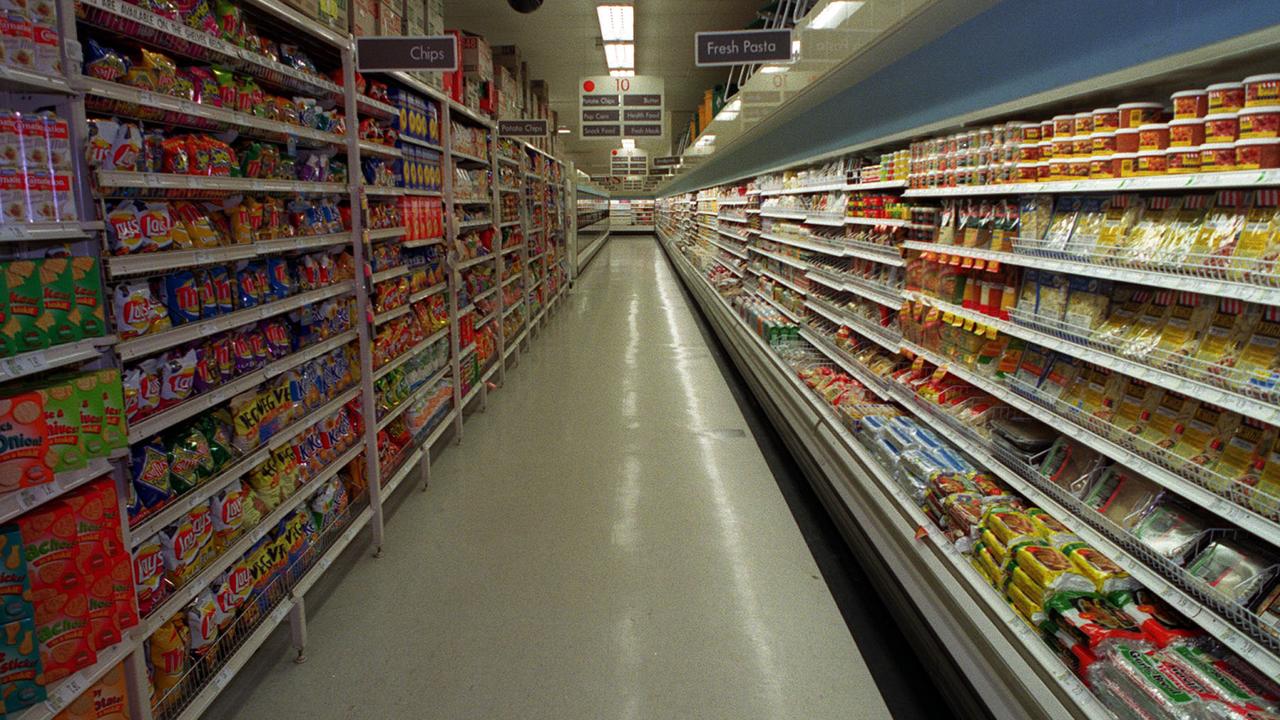
Across the globe, supermarkets, generally, share similar design elements. There’s a large entrance area; deli counters, bakers and butchers towards the side or rear; and a series of parallel aisles, piled high, leading down to a barrier of check-outs.
But in Britain and elsewhere, a central aisle often slices through the serried ranks of the other aisles at a 90 degree angle.
It allows shoppers to head deep into the store without having to detour to the front or rear of the store first.
It occurs in Australia too. Woolies has them in stores in Leichhardt and Baulkham Hills in Sydney. Many Aldi supermarkets sport what is also known as an “aisle break” too.
But it’s rare, very rare. The standard for Aussie supermarkets is narrow aisles, with two metre high shelves either side that stretch up to 30 metres into the distance with no break.
RELATED: Aldi staffer shares secret sales ticket code
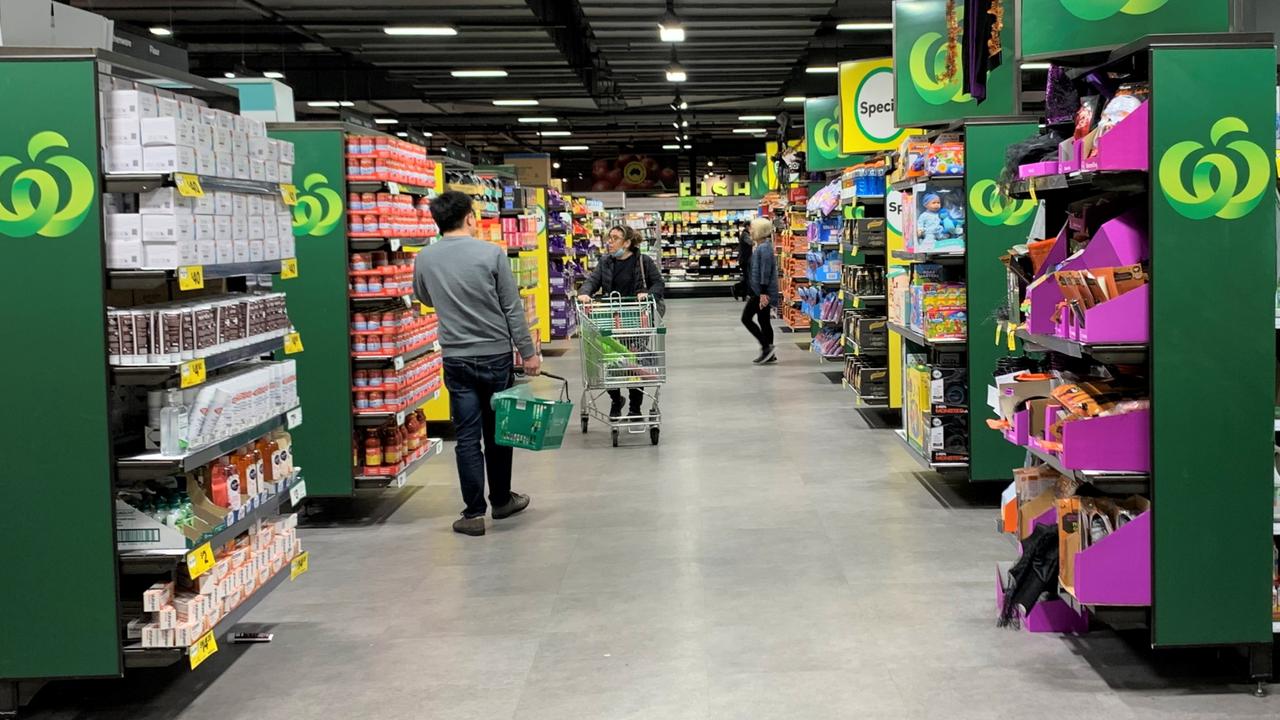
BUTT BRUSHES AND RACETRACKS
The University of South Australia’s Dr Bill Page has analysed how customers shop in Australian supermarkets with and without these central aisles.
His research, produced with colleagues Svetlana Bogomolova and Giang Trinh, found the typical Australia supermarket layout had been “criticised as canyons where shoppers feel trapped”.
Customers felt so trapped, most avoid walking the whole length of the aisles, partly due to a phenomena coined as the “butt brush effect”.
“Shoppers don’t like standing in a narrow spot where other people walking behind might accidentally brush against them,” wrote the authors.
So, almost subconsciously, people instead duck into and then U-turn out of narrow aisles once they’ve got what they need.
The rest of the time we tend to stick to the more open and accessible areas of the store around the perimeter. This is known as the “racetrack” method of circulating around a supermarket.
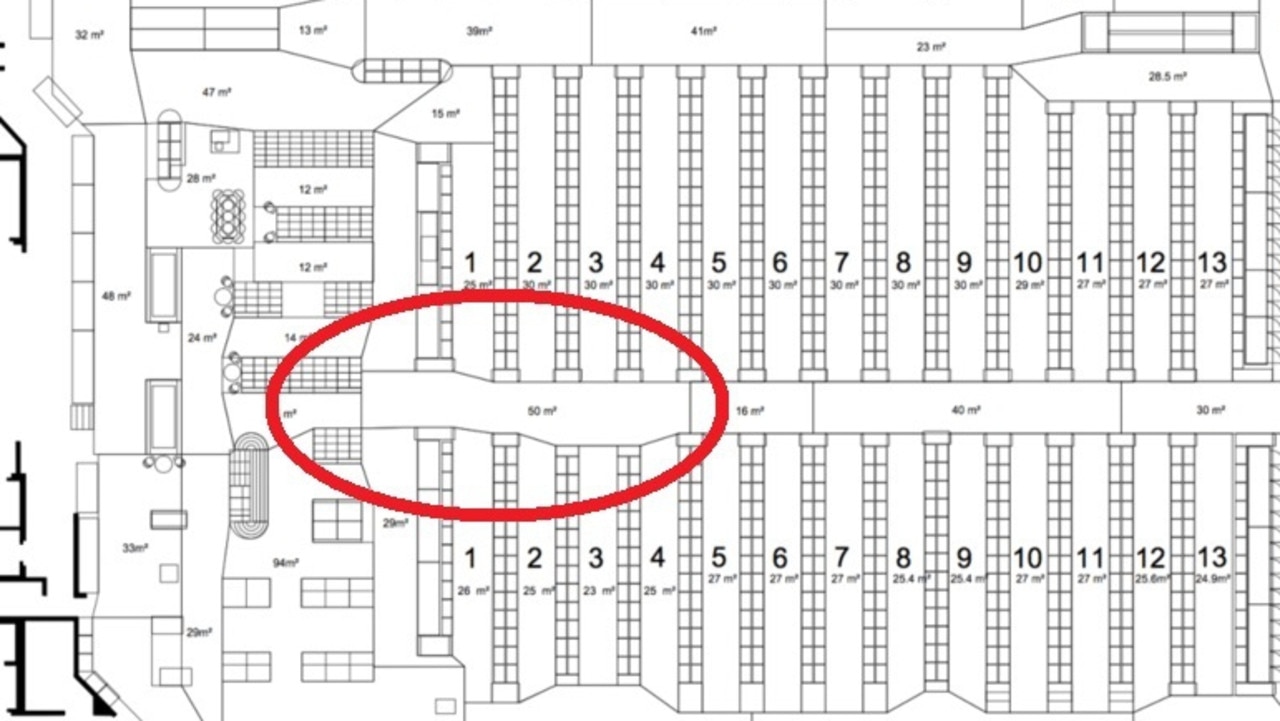
Middle aisles could well encourage shoppers to swerve off the racetrack and explore the aisles more fully, said Dr Page.
“This layout breaks the long aisles and offer shoppers a way out or an opportunity to change direction.
“It might result in a faster, more efficient and hence more pleasing shopping experience.”
Dr Page said that shoppers had three resources which they used at the supermarket: money, time and angst. When either money or time ran out, or their angst levels rose above a certain limit, they headed to the checkout.
“A store which is faster for shoppers to navigate may not only reduce their time but their levels of angst resulting in more satisfied, and profitable, shoppers,” he said.
And the profitable bit is key for the supermarket chains. Most specials, be it loo roll or cereals, are piled high at the ends of each aisle on shelving known in the retail world as “endcaps”.
Aisle breaks, which split across the long aisles, means more endcaps. That means more specials and, theoretically, more items in the shopping trolley.


DO MIDDLE AISLES WORK IN AUSTRALIA?
Dr Page’s team tested out these theories at two similar sized supermarkets in Sydney, both with a turnover of more than $1 million a week. One had a middle aisle and one didn’t.
What they found surprised them.
Australian shoppers were not as won over by the charms of a middle aisle as they expected. Given the choice two thirds still journeyed around the store using the racetrack method.
If they did saunter down the aisles many simply ignored the middle aisle.
“The most prevalent path (46 per cent of shoppers) was to travel along the inner aisle, directly perpendicular to the middle aisle, continuing on as if it was not there.”
Indeed, the angst levels of some shoppers actually went up in aisle break stores, Dr Page told news.com.au.
“Customers in the middle aisle store appeared frustrated with the four way intersections (that central aisles inevitably lead to) and described these intersections as “overcrowded”.
However, they found middle aisle stores led to a higher number of smaller basket shops and people zipped in and out the supermarket quicker.
More than half of shoppers in central aisle supermarkets left within 15 minutes compared to 38 per cent of people in standard supermarkets.
Slightly more customers also had 15 items or less in their baskets in middle aisle stores.
This isn’t great for supermarkets which want you to linger longer and buy more stuff. Although, shoppers generally spent the same amount of cash in either store.
RELATED: Deli counters disappearing from some stores
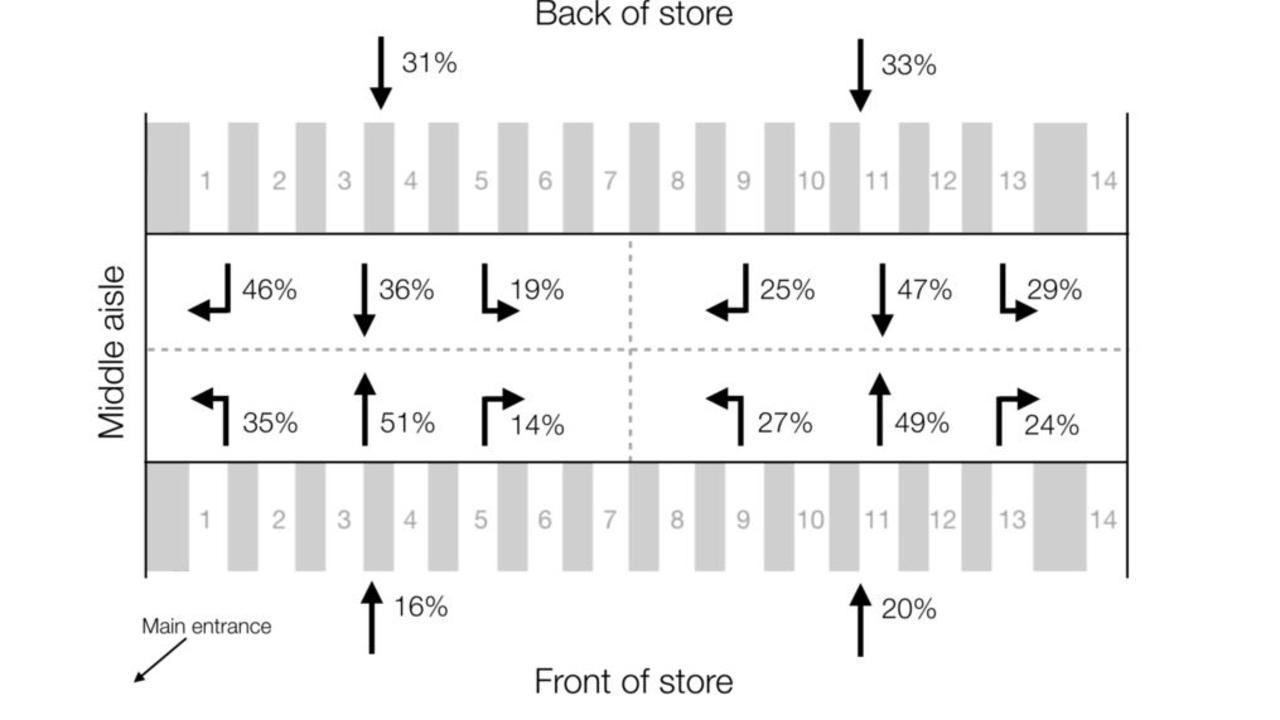
SHOPPING AISLE HABITS ‘HARDWIRED’
Surprisingly there was no increase in customers buying specials despite their being double the endcaps to display them.
“It may be that shoppers have an internal promotional budget which is spread out across the store and when they spend this budget they disregard or ignore the aisle ends,” Dr Page said.
He added there might be many reasons why shoppers chose a certain path in the supermarkets or spend a certain amount and so the results in the stores with a central aisle may not be down to that feature alone. For instance, the standard Australian store design might be hardwired into the psyche of shoppers and they’re loathe to deviate from their usual paths.
Yet whatever the reason, it’s hardly a ringing endorsement for redesigning Australian supermarkets along the UK model.
“Unless the benefits to the retailer of selling more promotional ends outweighs the loss of overall shelf space it does not appear to be worthwhile to layout stores with a middle aisle,” said Dr Page.
A Woolworths spokeswoman confirmed to news.com.au that there were no plans to bring the overseas feature to Australia.
“We know a one-size-fit approach doesn’t always work and while we have central aisles in some of our stores, based on customer feedback and the physical size of many of our stores, it is not something we’re looking to roll out more broadly”.
A Coles spokesman told news.com.au that its stores were “uniquely tailored to the Australian market”.
Here, there was a preference for fresh produce and bakery items at the front of the store. In the UK, this was less common. A British store might open onto an area selling clothes or specials.
Nonetheless, there were a few of these aisle outliers in Australia, he said.
“In a small number of stores with longer non-standard layouts, aisle breaks may be required so customers can easily get to their favourite product.”
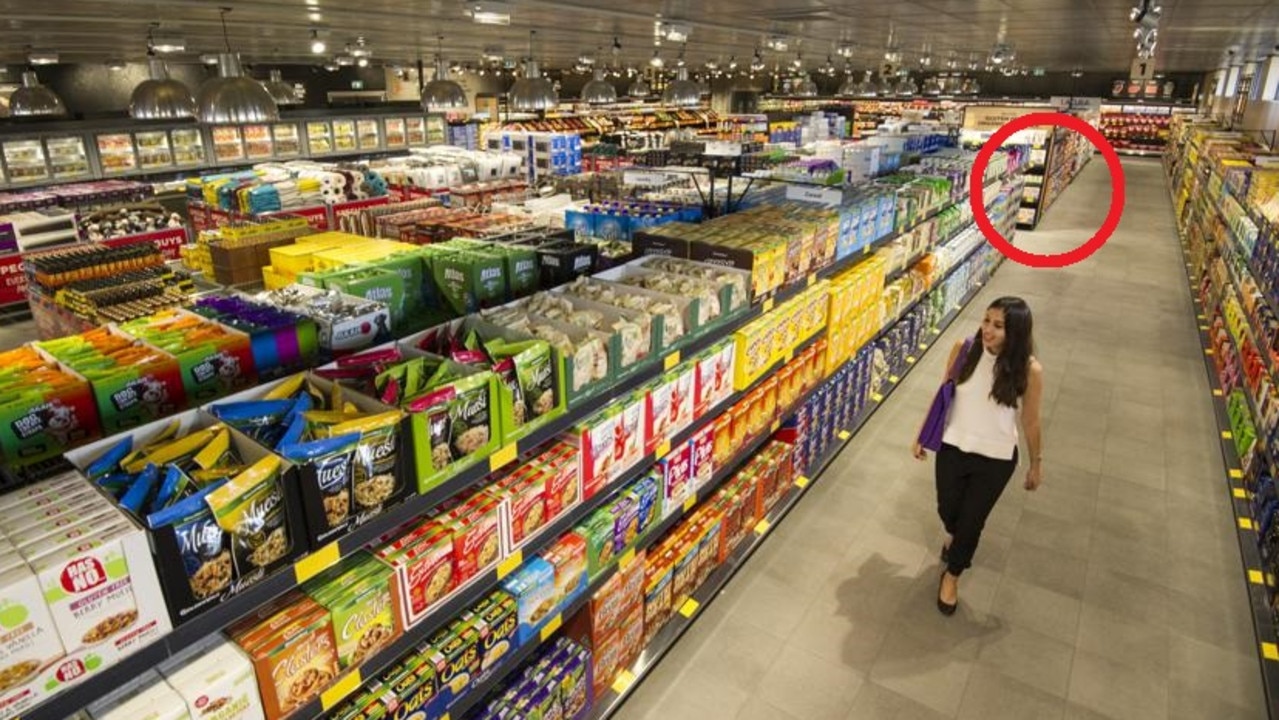
An Aussie supermarket staple that is under threat is the delicatessen. Last year, Woolworths began removing them from some inner city supermarkets prior to their conversion to its Metro “grab and go” format. Loose ham, fish and chicken was replaced by packed items. Coles has removed delis from less profitable stores. Again, deli items in these stores are now packaged.
Still, Australia has far more delis than the UK. Last year, grocery giant Sainsbury’s said it would remove delis from every single store to bolster profits in the wake of COVID-19.




